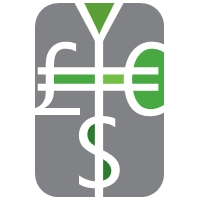(Note: the below is a high level review of certain potential issues and is not to be relied upon in any definitive manner nor as legal and/or regulatory advice).
The European Securities and Markets Authority (ESMA) issued a ‘Call for Evidence’ paper on 22 April 2015 on investment using virtual currency (VC) and the use of distributed ledger technology. It appears from the paper that ESMA is looking to ascertain a greater understanding of the use of virtual currency technology, rather than being under an immediate mandate to suggest regulation – but depending on its assessment on the responses this has also not been ruled out.
The deadline for responses is 21 July 2015 and all contributions should be submitted online at the ESMA website with the heading: “Your input – Consultations’.
What’s the focus of ESMA’s virtual currency paper?
Purpose & background
ESMA is seeking a greater understanding of investment using virtual currency and distributed ledger technology. In particular, ESMA has narrowed its focus on the following three matters:
Investment products which have virtual currency as an underlying: for example, contract for differences that use virtual currencies as an underlying / reference to determine the amount payable under the instrument
Investment in virtual currency based assets/securities – and the transfer of those assets / securities: this covers what are known as ‘traditional’ financial assets such as shares, funds etc that, for example, are issued / traded using virtual currency distributed ledger technology.
Other uses of the distributed ledger in relation to investment: an example given in the paper includes the potential for the distributed ledger technology to be used to record offers, transactions in or transfers of ownership or other rights in a ‘traditional’ security.
It is noted that the straightforward purchase and holding of a virtual currency is not a focus (although operators of such schemes should still seriously consider responding to the paper).
ESMA’s specific questions
Further to the above, ESMA has set out a list of 10 questions for respondents, however, responses do not necessarily need to be limited by these. The questions are:
Q 1: Do you have any further information about any other VC investment product or platform distributing VC investment products, their location or size outstanding/volume?
Q 2: Do you have any information about the profile of investors investing in VC investment products?
Q 3: Do you have anything to add or suggest a change to the description [as set out in the paper] of how virtual currency distributed ledgers work? Please clearly state to which virtual currency you are referring in your answer or whether your answer refers to virtual currencies in general.
Q 4: Do you agree with the general investment process in VC based financial assets as described above [as set out in the paper]? Please explain where this process could differ for different virtual currencies.
Q 5: Which VC based financial assets exist other than the broad categories mentioned?
Q 6: Do you agree with the analogies to traditional regulated entities as outlined [in the paper]? Please explain where you have a different opinion, including where the analogies are different for different VCs.
Q 7: Do you have more evidence on how widespread ownership of VC based financial assets/securities is? Please mention your sources.
Q 8: Do you agree with the assessment of benefits and risks of VC based financial assets/securities or are there other benefits/risks for investors, for other market participants, and for the financial system as a whole?
Q 9: How is distributed ledger technology being used or likely to be used in relation to the issuance, distribution, trading, recording of transactions and ownership of ‘traditional’ securities or investment products and why?
Q 10: To what extent is the use of distributed ledger technology in relation to ‘traditional’ securities or investment products being separated from an associated virtual currency and, if so, how and why?
Concluding remarks
As you can tell from the questions posed, ESMA is clearly at the beginning of its learning curve on the subject of virtual currencies and their uses, benefits and risks. This presents a clear opportunity to existing stakeholders to provide ‘ground level’ input into ESMA’s knowledge base – hopefully to assist a more tailored approach to framing any proposed regulatory action which may be subsequently implemented.

